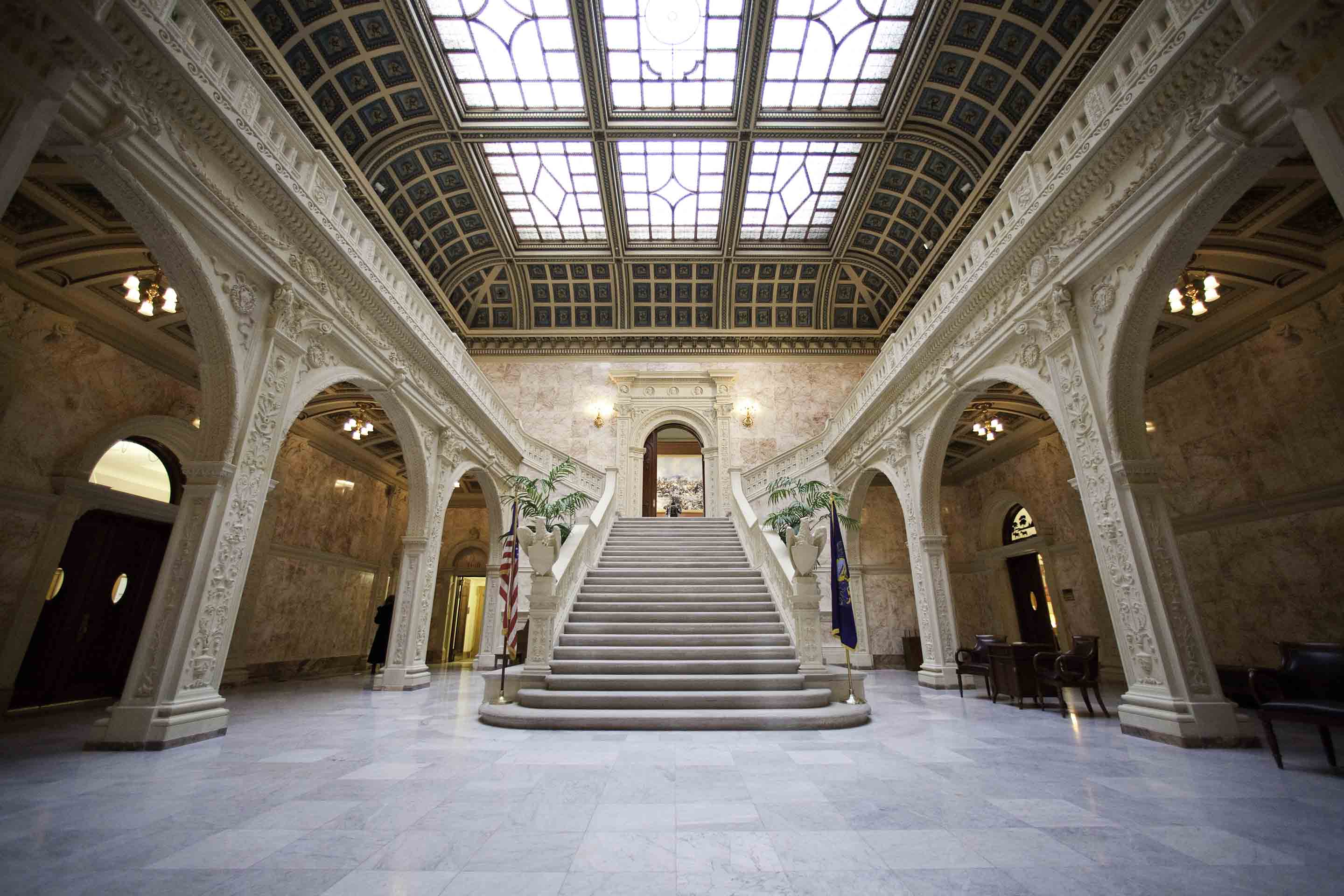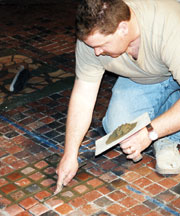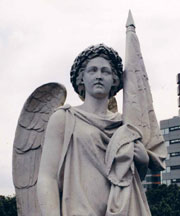 |
The Committee has a continuing preservation maintenance program that is an ongoing, long-term campaign of restoration meant to fix minor building damages before they get out-of-hand. In addition to the semi-annual preservation cleaning of the public corridor surfaces, the Capitol preservation Committee conducts a review and documents necessary repairs. Staying on top of repairs throughout the building, whether big or small, provides a stopgap measure that, barring any unforeseen emergencies, will keep the building in good condition While preservation cleaning is not as glamorous as some of the larger projects the Committee has undertaken, it is equally if not more important, because continued maintenance is the greatest form of historic preservation, preserving the initial restoration investment and keeping costly repairs at a minimum.
MORE...
|
 |
The Committee continued its preservation maintenance of the Matthew J. Ryan Legislative Office Building. The scope of work for this project is very similar to the preservation program in the Capitol Building. Work in the Ryan Building includes cleaning of plaster, finished canvas and stone, walls, beam drops, soffits, moldings, bronze and stone railings, gilded surfaces, finished woodwork, light fixtures, artificial palms, and miscellaneous architectural materials and finishes. In addition to the specialty preservation, this project also undertakes more meticulous repairs.
MORE...
|
 |
In 1902, artist George Grey Barnard was awarded the commission for the sculptural groups located at the main entrance of the Capitol. As soon as the general design for the sculpture was developed, Barnard left for France to begin the task of creating 27 marble figures. Barnard, plagued with personal and financial difficulties, was unable to complete the statues in time for the Capitol's dedication on October 4, 1906. It was not until 1910 that they were finished and exhibited at the Grande Palais in Paris.
MORE...
|
 |
There are many bronze elements throughout the Capitol, which enhance both the architecture and artwork of the building, including statues, doors, and lighting fixtures. The largest and oldest bronze is an equestrian statue of General John Frederick Hartranft. Governor Hartranft was honored with this statue to commemorate his service to the Union during the Civil War and for serving two terms as governor of Pennsylvania. Standing 29 feet high, this monument was installed at the front steps of the Capitol building in May 1899. It was designed at a cost of $18,000 by noted sculptor Frederick W. Ruckstuhl.
MORE...
|
 |
When Henry Chapman Mercer produced the 16,000-square-foot Moravian tile floor for the Capitol building, he set out to express the story of Pennsylvania's rich history — from contact with Native Americans through the state's industrial might. "It is the life of the people," he wrote, "rough, powerful, and absolutely real . . ."
No other singular artistic creation tells the story of Pennsylvania's history in the original style of Mercer's work, but it is doubtful that Mercer could foresee the amount of wear to his masterpiece of American folk art. Some 94 years after it was completed, the Moravian tile floor requires constant maintenance to preserve its integrity and appearance.
MORE...
|
 |
In 1858, the General Assembly passed an act setting a price "not to exceed $30,000" to erect the Mexican War Monument in honor of Pennsylvanians who had fought in the Mexican War (1846-1848). Sixteen men, including Governor William Packer and Adjutant General Edward C. Williams, were appointed commissioners to issue contracts and supervise the erection of the monument. Twenty-nine design plans were received and exhibited publicly in the governor's office, several of which were selected as the top designs so that costs could be ascertained. After many interviews, the plan by James Batterson was adopted and a verbal agreement was made approving $24,000 for the cost of the marble. The commissioners determined that the remaining $6,000 was insufficient to cover the cost for erecting the monument, but thought it improper to authorize the expenditure with "uncertain reliance upon future legislative appropriations for its completion." The records show that eight years later on May 22, 1867, new specifications were on file by Hamilton Alricks, Jr. of Harrisburg for the monument that now stands in the southeast quadrant of Capitol Park. It was moved to this spot in 1894, from its original location where the Matthew J. Ryan Building is today, to accommodate building construction.
MORE...
|
 |
The Committee is responsible for the restoration and regular maintenance of almost 300 original historic clocks, which are still located throughout the Capitol and associated buildings of the Capitol complex.
The clock project began in 1993 with the objective to restore and maintain the clocks' wood finishes and inner mechanisms. In addition, the Committee wanted to collect and maintain historic documentation along with an inventory of each clock. By developing an electronic database, detailed information was compiled, including clock descriptions, construction materials, dimensions, conditions, location, and an ongoing maintenance history.
MORE...
|
|
|